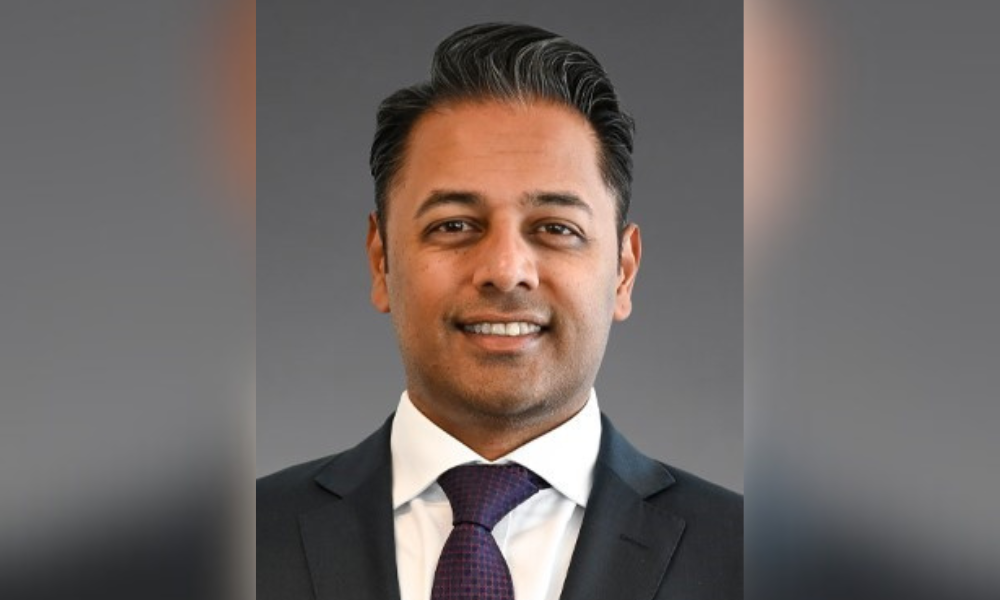Already a household name, Telstra has had to tap into new technologies and markets to reinvigorate its business. General counsel Carmel Mulhern tells Australasian Lawyer about the opportunity this is creating for firms.
Already a household name, Telstra has had to tap into new technologies and markets to reinvigorate its business. General counsel Carmel Mulhern tells Australasian Lawyer about the opportunity this is creating for firms.
When Aussie developer John Papandriopoulous won the ‘Green Card lottery’, which allowed him permanent residency in the US and the power to start his own San Francisco-based tech company, few would have predicted what would happen next. Developing an app that allowed the iPhone 5 to take 20 pictures a second, Papandriopoulous released an innovation so unique that his company SnappyLabs was bought out by Apple earlier this year for a fi gure rumoured to have made the 35-year-old a multimillionaire.
The San Francisco Bay area was also where the magic happened for Aussie tech entrepreneur Ben Keighran. The young entrepreneur, who taught himself to code in C++ by age 13, moved to San Francisco from Sydney in 2007 and eventually started Chomp, a mobile app search engine. His innovation was sold for roughly US$50m in 2012. Papandriopoulous and Keighran aren’t alone.
As mobile app technology continues to evolve, Australians have become increasingly drawn to the sprawl of suburbs that forms the southern part of the Greater San Francisco Bay area, a region better known as Silicon Valley. Businesses and professionals of all types have come here following the scent of rags-to-riches tech startups. This has included Australia’s biggest name in telecommunications: Telstra.
The company has a Silicon Valley office, set up to explore opportunities for taking stakes in technology businesses. A primary focus has been companies releasing mobile apps.
Telstra general counsel Carmel Mulhern says the company is keeping an open mind about which entrepreneurs it partners with, promising flow-on work for law firms.
“Telstra is looking into applications that would use our network or potentially sit at the top of our network. They need to be innovative; applications that we could learn from or package up with other products that would be on our network. We are open to anything that people come up. And that’s the whole point,” Mulhern says, adding that this approach has called for the company to further engage the legal community.
“There’s a lot of legal work in there because it doesn’t only involve setting up companies, but also the intellectual property side of things: trademarks and patents.”
Telstra’s involvement in the bustling tech startup scene in Silicon Valley has been complemented by its establishment of an innovation hub in Sydney. The hub provides funding for tech entrepreneurs who are developing new ideas, which Mulhern says dovetails into the company’s strategy of exploring new markets and opportunities.
“Legally, this has some unique challenges,” she says. “Our industry is highly regulated and, of course, there is even a chapter in Australian trade practices law just on telcos. The challenge for us is to grow and start doing other things, but within the constraints that we have. This means it’s a really great and interesting place to work as a lawyer.”
TECHNOLOGY AND LEGAL SPEND
Considering Telstra is already a well-established brand with a strong network infrastructure, the company has identified that growth is needed in service functions that are not yet a core part of Telstra’s offering. This has propelled the company to venture into new technologies, and also to aim its sights at global diversification. One of the service platforms generating buzz is ‘the cloud’.
Also referred to as cloud computing, this entails distributed computing over a network, where applications or content are accessed and shared on a server, rather than a single device. It is nothing new but has been generating interest as the scope of what can be accomplished utilising cloud-based platforms increases. “We see it as very important,” says Mulhern. “We see [this] as fundamental to our business and large enterprise customers in Australia and Asia. It’s a skill we have and are looking to expand to support our Australian enterprise customers as they move offshore.”
Rolling out services at a higher level has required significant financial investment by Telstra, helping shift how the company considers many of its other expenses, including its legal bills. “We’ve had to be innovative,” Mulhern says. “We were the in-house law team that pioneered the ‘all you can eat’ model. It was a really good way to introduce a new firm to our panel and build greater efficiency in spending.”
The model was developed following an agreement with a large firm that was new to the company’s panel at the time. Telstra was concerned about being billed for additional hours brought about by learning on the job that often occurs when new firms advise the company. “We had to think: how do we ensure we are not paying them to get up to speed?” Mulhern says the company reached an agreement that it would pay the new fi rm a set figure for a year’s work. Effectively, Telstra could brief the firm as much as it liked, but the price for legal services would remain fixed.
“The beauty of this is you could factor a fixed number into your budget of what you’d be spending with that firm. There was risk for the firm that we would go over that amount and they would be giving us a lot of free work, but there was risk for the company that we wouldn’t use them enough and leave money on the table. We ended up getting it about right. We got certainties in what we were going to pay; the lawyers got encouraged to brief a new firm because, effectively, you weren’t looking at every single bill in minute detail.”
In her own words: Carmel Mulhern
AL: How have you selected which firms go onto your pangel of legal service providers that you regularly seek advice from?
Historically the panel was comprised of one or two large legal firms that we used when Telstra was floated. Over time, we, like the rest of the business world, have needed to find ways of simplifying things and cutting down costs, and this has required us to review how we engage external law firms.
Today we have three top-tier firms on the panel, which we use for strategic high-level work. We have diversified the panel by adding two or three mid-tiers. These are cheaper firms that have great lawyers; many were senior partners in international firms and have moved to these domestic, mid-tier firms. We then have a couple of other firms that are specialists in areas such as IT. We run a tender process and look for ways to get the best financial result from firms and are open to whatever lawyers can come up with: it could be a volume discount, for example, in which guaranteeing firms a certain amount of work gets us a discount.
AL:How often do you review the panel?
We review contracts every year to make sure they are running to the right rate, but we do a full review tender process every three years.
AL: What has been your biggest frustrations with lawyers you use?
Sloppy or incorrect advice is a major frustration, but it doesn’t happen often. A more frequent frustration is getting advice that doesn’t really help me, as in-house counsel, give the answer my client is seeking. This usually happens when lawyers don’t take the time to look at what the company’s strategic imperatives are, and follow this up with advice that is not tailored to the company and the outcome it is looking at.
The worst thing is getting black-letter advice listing all the problems but no solutions, or a number of options but no recommendation. You don’t want legal advice that just sits on the fence. You also sometimes get advice that isn’t summarised. This means I have to spend as much time pulling [advice] into a form I can give my internal clients as I would if I had written the advice myself.
AL: If you had to speculate, why do you think some lawyers are making these kinds of mistakes?
I often get the impression it’s because some lawyers perhaps have too many clients. I also think that you get a lot of lawyers that are trained as black-letter lawyers and haven’t tuned their mind to the possible commercial outcomes. This can sometimes happen when lawyers haven’t had a secondment in an in-house law team. Those who have are often much better placed to tailor advice to in-house lawyers, in my experience.
To get the PDF copy of this article, get the Australasian Lawyer 1.02 issue.
When Aussie developer John Papandriopoulous won the ‘Green Card lottery’, which allowed him permanent residency in the US and the power to start his own San Francisco-based tech company, few would have predicted what would happen next. Developing an app that allowed the iPhone 5 to take 20 pictures a second, Papandriopoulous released an innovation so unique that his company SnappyLabs was bought out by Apple earlier this year for a fi gure rumoured to have made the 35-year-old a multimillionaire.
The San Francisco Bay area was also where the magic happened for Aussie tech entrepreneur Ben Keighran. The young entrepreneur, who taught himself to code in C++ by age 13, moved to San Francisco from Sydney in 2007 and eventually started Chomp, a mobile app search engine. His innovation was sold for roughly US$50m in 2012. Papandriopoulous and Keighran aren’t alone.
As mobile app technology continues to evolve, Australians have become increasingly drawn to the sprawl of suburbs that forms the southern part of the Greater San Francisco Bay area, a region better known as Silicon Valley. Businesses and professionals of all types have come here following the scent of rags-to-riches tech startups. This has included Australia’s biggest name in telecommunications: Telstra.
The company has a Silicon Valley office, set up to explore opportunities for taking stakes in technology businesses. A primary focus has been companies releasing mobile apps.
Telstra general counsel Carmel Mulhern says the company is keeping an open mind about which entrepreneurs it partners with, promising flow-on work for law firms.
“Telstra is looking into applications that would use our network or potentially sit at the top of our network. They need to be innovative; applications that we could learn from or package up with other products that would be on our network. We are open to anything that people come up. And that’s the whole point,” Mulhern says, adding that this approach has called for the company to further engage the legal community.
“There’s a lot of legal work in there because it doesn’t only involve setting up companies, but also the intellectual property side of things: trademarks and patents.”
Telstra’s involvement in the bustling tech startup scene in Silicon Valley has been complemented by its establishment of an innovation hub in Sydney. The hub provides funding for tech entrepreneurs who are developing new ideas, which Mulhern says dovetails into the company’s strategy of exploring new markets and opportunities.
“Legally, this has some unique challenges,” she says. “Our industry is highly regulated and, of course, there is even a chapter in Australian trade practices law just on telcos. The challenge for us is to grow and start doing other things, but within the constraints that we have. This means it’s a really great and interesting place to work as a lawyer.”
TECHNOLOGY AND LEGAL SPEND
Considering Telstra is already a well-established brand with a strong network infrastructure, the company has identified that growth is needed in service functions that are not yet a core part of Telstra’s offering. This has propelled the company to venture into new technologies, and also to aim its sights at global diversification. One of the service platforms generating buzz is ‘the cloud’.
Also referred to as cloud computing, this entails distributed computing over a network, where applications or content are accessed and shared on a server, rather than a single device. It is nothing new but has been generating interest as the scope of what can be accomplished utilising cloud-based platforms increases. “We see it as very important,” says Mulhern. “We see [this] as fundamental to our business and large enterprise customers in Australia and Asia. It’s a skill we have and are looking to expand to support our Australian enterprise customers as they move offshore.”
Rolling out services at a higher level has required significant financial investment by Telstra, helping shift how the company considers many of its other expenses, including its legal bills. “We’ve had to be innovative,” Mulhern says. “We were the in-house law team that pioneered the ‘all you can eat’ model. It was a really good way to introduce a new firm to our panel and build greater efficiency in spending.”
The model was developed following an agreement with a large firm that was new to the company’s panel at the time. Telstra was concerned about being billed for additional hours brought about by learning on the job that often occurs when new firms advise the company. “We had to think: how do we ensure we are not paying them to get up to speed?” Mulhern says the company reached an agreement that it would pay the new fi rm a set figure for a year’s work. Effectively, Telstra could brief the firm as much as it liked, but the price for legal services would remain fixed.
“The beauty of this is you could factor a fixed number into your budget of what you’d be spending with that firm. There was risk for the firm that we would go over that amount and they would be giving us a lot of free work, but there was risk for the company that we wouldn’t use them enough and leave money on the table. We ended up getting it about right. We got certainties in what we were going to pay; the lawyers got encouraged to brief a new firm because, effectively, you weren’t looking at every single bill in minute detail.”
In her own words: Carmel Mulhern
AL: How have you selected which firms go onto your pangel of legal service providers that you regularly seek advice from?
Historically the panel was comprised of one or two large legal firms that we used when Telstra was floated. Over time, we, like the rest of the business world, have needed to find ways of simplifying things and cutting down costs, and this has required us to review how we engage external law firms.
Today we have three top-tier firms on the panel, which we use for strategic high-level work. We have diversified the panel by adding two or three mid-tiers. These are cheaper firms that have great lawyers; many were senior partners in international firms and have moved to these domestic, mid-tier firms. We then have a couple of other firms that are specialists in areas such as IT. We run a tender process and look for ways to get the best financial result from firms and are open to whatever lawyers can come up with: it could be a volume discount, for example, in which guaranteeing firms a certain amount of work gets us a discount.
AL:How often do you review the panel?
We review contracts every year to make sure they are running to the right rate, but we do a full review tender process every three years.
AL: What has been your biggest frustrations with lawyers you use?
Sloppy or incorrect advice is a major frustration, but it doesn’t happen often. A more frequent frustration is getting advice that doesn’t really help me, as in-house counsel, give the answer my client is seeking. This usually happens when lawyers don’t take the time to look at what the company’s strategic imperatives are, and follow this up with advice that is not tailored to the company and the outcome it is looking at.
The worst thing is getting black-letter advice listing all the problems but no solutions, or a number of options but no recommendation. You don’t want legal advice that just sits on the fence. You also sometimes get advice that isn’t summarised. This means I have to spend as much time pulling [advice] into a form I can give my internal clients as I would if I had written the advice myself.
AL: If you had to speculate, why do you think some lawyers are making these kinds of mistakes?
I often get the impression it’s because some lawyers perhaps have too many clients. I also think that you get a lot of lawyers that are trained as black-letter lawyers and haven’t tuned their mind to the possible commercial outcomes. This can sometimes happen when lawyers haven’t had a secondment in an in-house law team. Those who have are often much better placed to tailor advice to in-house lawyers, in my experience.
To get the PDF copy of this article, get the Australasian Lawyer 1.02 issue.







